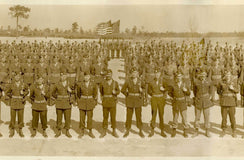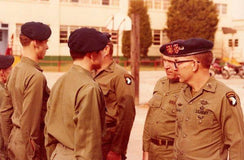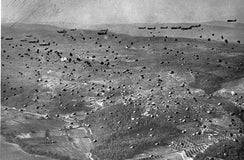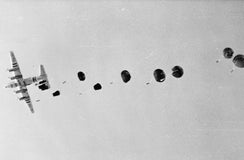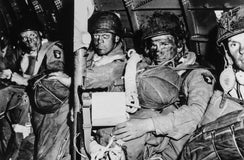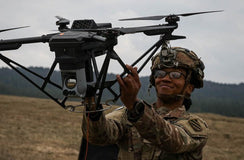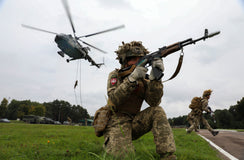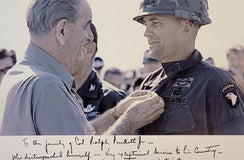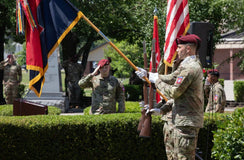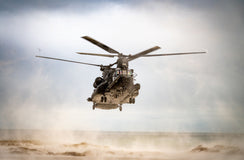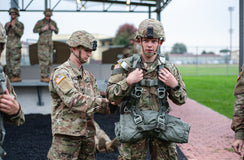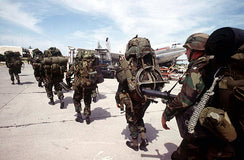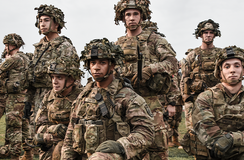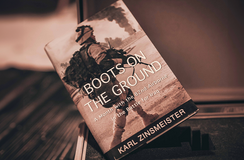Operation Hump: 173rd’s Legendary Operation in Vietnam
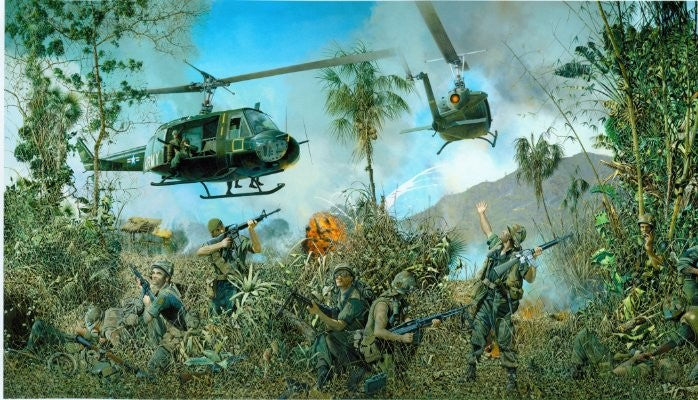

Soldiers take cover in a crater during the Vietnam War (Courtesy Photo/U.S. Army)
Operation Hump is a legendary operation conducted jointly by Australian and American Airborne forces in Vietnam. The Friendly composition consisted of the 1st Battalion, 503rd Infantry Regiment, 173rd Airborne Brigade, as well as a battalion from the Royal Australian Army in addition to a battery from New Zealand. The 173rd had become the first major unit of the U.S. Army to serve in Vietnam, but customary of the 173rd in being first, it was also the only multi-national combat unit to fight in the Vietnam War.
Contrary to some explanations relating the name to physical features of the terrain, it was actually named Operation Hump because it represented the halfway mark of the paratroopers' deployment to Vietnam. This critical operation was a turning point of the 173rd tenure in Vietnam and especially the 503rd Infantry Regiment. So, let’s take a chronological look at how the operation unfolded.

A depiction of Operation Hump (Courtesy Photo/U.S. Army)
Who? 173rd Airborne Brigade; Task: Search and Destroy; Purpose: Defeat the Enemy!
On November 8, 1965, Operation Hump was launched as a search and destroy mission by the 173rd Airborne Brigade, taking place approximately 17.5 miles north of Bien Hoa in Vietnam. The operation involved the deployment of the 1st Battalion, Royal Australian Regiment, to the south of the Dong Nai River. Interestingly, the 1st Battalion, 503rd Infantry, executed a helicopter assault on a landing zone located northwest of the Dong Nai and Song Be Rivers.
The primary objective of Operation Hump was to expel Viet Cong insurgents who had entrenched themselves in the strategic positions. For the initial days leading up to November 7, there was limited contact with the enemy. However, that day, B and C Companies established a defensive position for the night southeast of Hill 65, a densely forested hill with a triple-canopy jungle cover.
At approximately 0600 on the morning of November 8, C Company commenced a northwestward advance towards Hill 65, while B Company proceeded northeastward towards Hill 78. Shortly before 0800, C Company came under heavy fire from a well-entrenched and sizeable enemy force on the southern slope of Hill 65. In addition to being in a defensive position, the enemy force was armed with machine guns and shotguns.
At 0845, B Company received orders to halt its movement and pivot towards Hill 65 with the objective of providing support to C Company. They found themselves engaged in intense combat, often resorting to combat knives and bayonets to fend off daring close-range attacks from small groups of masked Viet Cong fighters. Indeed, a stuff made of legends!
B Company reached the base of Hill 65 at approximately 0930 and began ascending the hill. It became evident that a significant enemy force occupied the hill. While C Company was under heavy attack, B Company, by chance, was pushing against the enemy’s right flank.
The Enemy Has a Say as Well, but the 503rd Decides the Outcome!
In response to B Company’s flanking maneuver, the enemy, consisting mainly of a Viet Cong Regiment, shifted to the northwest. Consequently, the B Company commander called in airstrikes and requested artillery fire, including unique napalm-tipped shells, on the retreating enemy. These shells ignited the surrounding vegetation, causing many enemy fighters to catch fire, setting off their ammunition and grenades. B Company then established a defensive line encircling the hilltop from the southeast to the northwest, albeit with limited cover on the southern side.
Meanwhile, the Viet Cong commander recognized that his best chance was to close the distance with the U.S. forces to minimize the effectiveness of the 173rd’s air and artillery support. His troops attempted to encircle the American position on the hill from the east and southwest, launching shoulder-to-shoulder assaults up the hillside, resulting in hand-to-hand combat and the partial isolation of sections of B and C Companies. Despite two such determined enemy attacks, the legends of the 173rd managed to hold their ground, making this operation one for the history books.
Following the second massed enemy attack, the intensity of the fighting diminished as the Viet Cong troops attempted to disengage and withdraw, dispersing into the jungle to evade U.S. snipers. By late afternoon, it appeared that contact had been broken off, allowing the two companies to establish a night defensive position and attend to their casualties in the center of their position. Evacuation of the wounded proved challenging due to the dense jungle, with only a few of the most severely wounded being extracted by USAF helicopters employing Stokes litters. Most casualties had to wait until the morning of November 9 for evacuation.
The Legacy and the Spirit of the 173rd Lives On
Obviously, Operation Hump is a significant milestone for the 173rd, but it did become so at a high, very high cost. This operation resulted in significant casualties, with 48 U.S. Paratroopers killed and many more wounded. The estimated enemy casualties were much higher, with over 400 Viet Cong soldiers getting killed by the friendly forces. After a bloody and protracted war in Vietnam, the 173rd had earned four unit citations 14 campaign streamers, and its one-of-a-kind paratroopers had earned 13 Medals of Honor (yes, you read that right, 13). The brigade was deactivated in 1972, but the Army couldn't do without it, so it reactivated it in 2000. As they say, the rest is history, but for the 173rd, it always appears that the more appropriate term is "History-in-the-Making."

Soldiers walk through a field during Vietnam (Courtesy Photo/U.S. Army)
Did you know?!
Operation Hump has been immortalized in the song "8th of November" by Big and Rich. The song's introduction, narrated by Kris Kristofferson, recounts the events as follows:
On November 8, 1965, in the heart of war zone 'D' in Vietnam, the 173rd Airborne Brigade embarked on 'Operation Hump,' a fateful day when they found themselves ambushed by over 1200 Viet Cong fighters. Tragically, that day claimed the lives of forty-eight brave American soldiers. Amidst the chaos and threat, Lawrence Joel, a courageous medic, risked his own life to save many others and, in recognition of his heroic actions, became the first living Black man since the Spanish-American War to receive the United States Medal of Honor. But we’ll cover his heroism on some future blog.
Relieve the heroism and enjoy the song:


